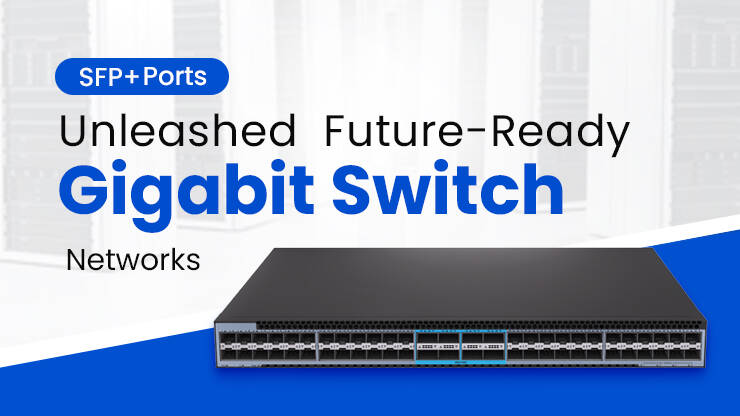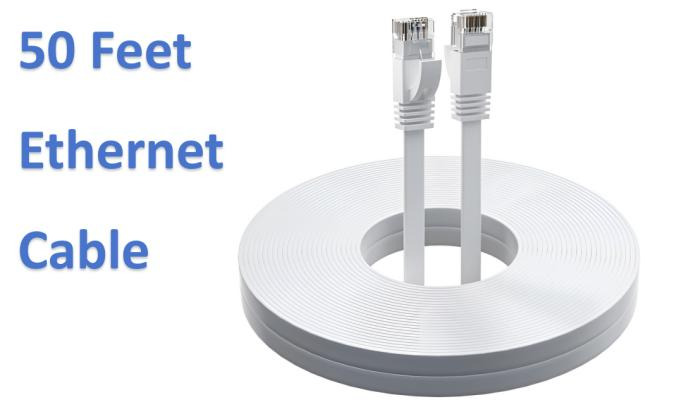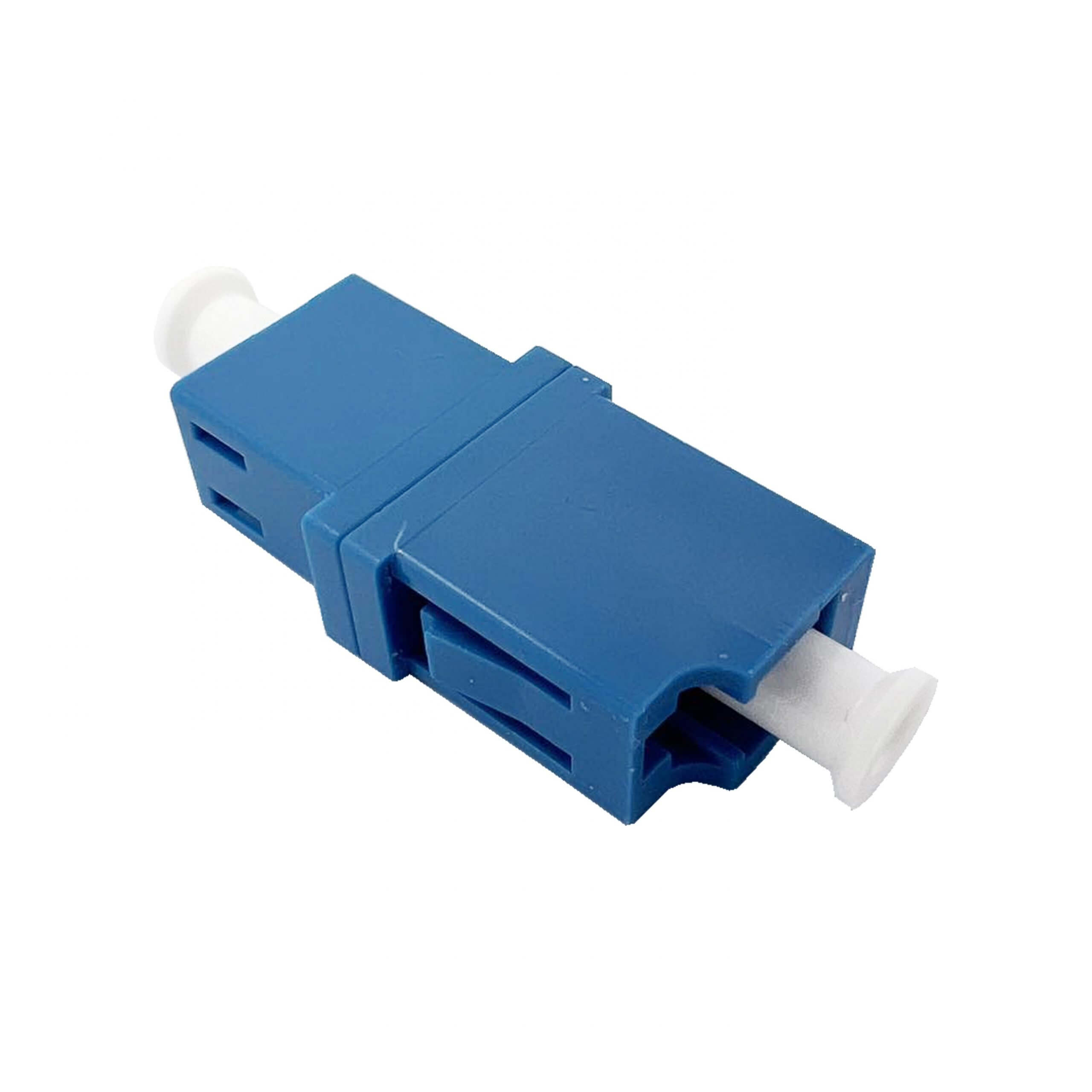SFP+ Ports Unleashed: Future-Ready Gigabit Switch Networks
What is an SFP+ Port?
SFP+ is the abbreviation of Enhanced Small Form-factor Pluggable. It is a packaging format specially launched for 10G Ethernet transmission. It complies with IEEE 802.3ae, SFF-8472, SFF-8431, SFF-8432, SFP+ MSA Compliant and other protocols. It inherits the miniaturization and hot-swappable characteristics of SFP and has the same physical size as SFP, but improves the transmission bandwidth by optimizing the electrical interface and signal encoding technology (such as PAM4 modulation or 8b/10b encoding). SFP+ ports are backward compatible with SFP packaging. When an SFP module is inserted, the transmission rate of the SFP module will be transmitted, but the reverse is not true. SFP+ modules cannot work on SFP ports.
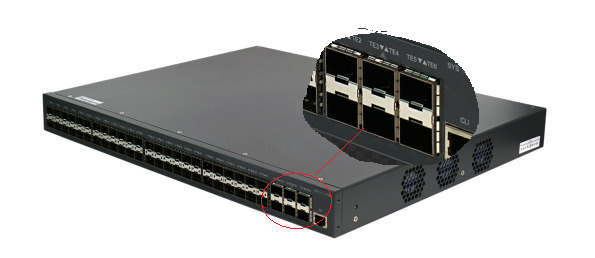
Advantages of SFP+ Ports
- Flexible Network Deployment
The SFP+ port cannot transmit data alone. It only provides an interface that requires the insertion of an optical module or other device to complete data transmission. Therefore, the transmission media it supports is not fixed, and both optical fiber and network cable can be used for transmission. This brings great flexibility to its networking. 10G optical modules, RJ45 modules, DAC or AOC can all be connected to the SFP+ port. At the same time, it is backward compatible with 1G speeds and can also provide support for 1G modules and cables. This makes its usage combinations diverse. Different products can be selected according to different usage environments to achieve a better user experience and meet the needs of different network construction. - Small Size and High-Density Deployment
SFP+ ports inherit the small size of SFP, reducing space usage and improving space utilization. Considering heat dissipation and power supply requirements, 48 SFP+ ports are typically designed into a 1U space, providing 48 service access channels. This dense deployment also facilitates cable management and O&M. Network faults can be quickly located, improving O&M efficiency and saving time. - Low Cost and Large Bandwidth
With the advancement of technology and the maturity of production processes, the cost of SFP+ modules has become very low. The 10G bandwidth can also meet the needs of high concurrent traffic in office networks and 4K traffic in video surveillance. The low latency feature also ensures the stability and reliability of real-time data transmission. It is an ideal choice for small network construction and can meet network transmission requirements at a low cost.
Why Choose a Switch with SFP+ Ports?
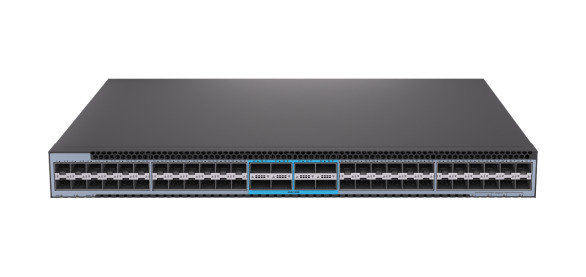
Take LSOLINK’s S6000M-48S8C data center switch as an example. It has 48 10G SFP+ ports and 8 100G QSFP28 ports. It has the following advantages:
- High Switch Capacity
48 10G SFP+ ports and 8 100G QSFP28 ports provide up to 4Tbps switching capacity and powerful data processing capabilities to meet the forwarding needs of large traffic flows, easily cope with data peaks, reduce transmission delays, and provide strong protection for the network.
- High-Density Business Transmission
48 10G SFP+ ports can connect to 48 traffic services, meeting the access needs of different services at the same time, reducing the number of cascades and the complexity of wiring, saving cabinet space and reducing physical space occupation. In addition, each port can be individually configured for isolation, independent encryption transmission for business, preventing privacy leakage and ensuring data security.
- Diverse Downlink Access Options
The 10G SFP+ port of S6000M-48S8C supports both Gigabit and 10G speeds, and supports multiple access options. Optical modules, AOC and DAC are perfectly compatible and can be connected to different devices such as switches, routers, network cards, APs, PCs, etc., truly achieving multi-purpose use of one device.
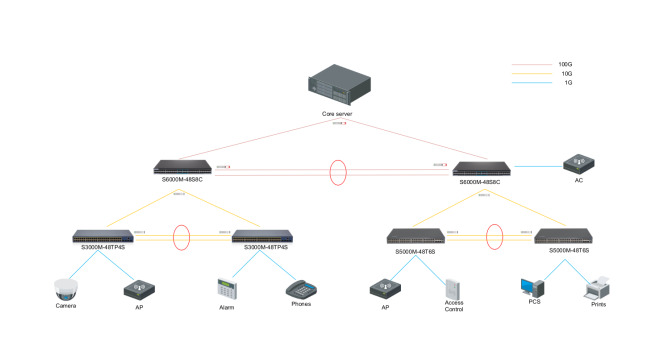
The Future of SFP+ Ports
Although the SFP+ port still often appears in our eyes, we have to admit that it has not kept up with the development of technology. As the speed becomes higher and higher, the small size design of SFP+ can no longer meet the power consumption and PCB size increase brought by the increase in speed. However, the development and evolution of technology will give it new life. For example, the more advanced SFP28 optimizes the PCB board and signal modulation method, reaching a 25G speed; SFPDD package uses PAM4 limited modulation and double-layer gold fingers to achieve a 100G speed in a small package. In the future, as the demand for higher-speed networks grows, the SFP+ family will develop in coordination with other high-speed interfaces (such as SFP28, QSFP+, QSFP28) to build a higher-performance and more flexible network architecture.
Five Questions about SFP+ Ports
Q: What is the maximum transmission distance of the SFP+ port?
A:The maximum transmission distance of the SFP+ port depends on the module inserted. Without an amplifier, the maximum transmission distance of a 10G multi-mode module is 300m. The maximum transmission distance of a 10G single-mode module depends on the module model. For example, the maximum transmission distance of a 10G-SFP-ER module is 40km.
Q:Can SFP and XFP optical modules be used on SFP+ ports?
A:SFP optical modules can be used on SFP+ ports because SFP+ ports are backward compatible and support SFP optical modules. However, XFP optical modules cannot be used on SFP+ ports because the size of XFP optical modules is larger than that of SFP+ ports and they are physically incompatible.
Q:Can I use a network cable to connect to the SFP+ port?
A:Direct connection is not possible, you need to use the help of RJ45 module, insert the RJ45 module into the SFP+ port, and you can use the network cable to connect the SFP+ port.
Q:Can SFP28 and SFPDD optical modules be used on SFP+ ports?
A:Although they are the same size, SFP28 optical modules and SFPDD optical modules cannot be used on SFP+ ports because SFP+ ports are only backward compatible and not upward compatible. Their data modulation methods are different.
Q:Can an SFP+ port power an AP?
A:The SFP+ port cannot power the AP. It does not have this function. Only the RJ45 port that supports POE can power the AP.
- PREV: How to Select the Best 50ft Ethernet Cable for Your Needs?
- NEXT: Null



